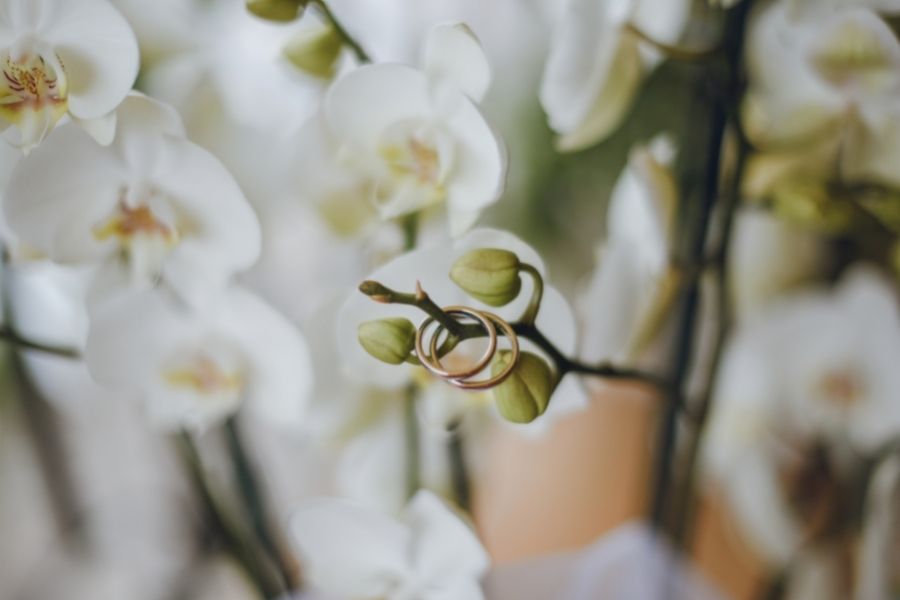Love is a universal language. When people think of a wedding in the western world, they picture a bride and groom walking down the aisle. They think of floral décor, a ring boy and flower girls, and a reception after the ceremony. This isn’t a stereotype but rather the norm in western nationals. However, you’ll notice that some cultures have very different wedding customs.
Nuptial Knot : Weddings Around the World and The Differences
From the nuptial knot in India to el lazo (“the lasso”) in Mexico, many countries have unique traditions with deep roots. At the end of the day, all of these traditions are a way to celebrate love. Nonetheless, it’s fun to explore different cultures and see how they vary. If you’re planning a wedding, you may even get some ideas from a country on the other side of the globe.

Are you ready to take a trip around the globe? We will explore unique wedding traditions in countries across Latin America, Asia, Africa, Europe, and the Middle East.
Latin America
Most Latin America speaks a romance language – Spanish or Portuguese – so the people who live there must be the romantic type, right? You would think so if you visited a wedding a Latin American wedding. As you can imagine, wedding traditions vary from country to country. Spanning from Mexico to the southern tip of Argentina, Latin America covers a huge area of terrain. Don’t forget; you also have a few islands out in the Caribbean – Puerto Rico, Cuba, and the Dominican Republic.
Let’s look at some of the unique traditions in Latin America’s largest countries – Mexico, Brazil, and Colombia.
Mexico
If you ever attend a Mexican wedding, you’ll likely see “el lazo” – the lasso. The lasso isn’t a rope; instead, a string made with flowers and beads. Family members place the lasso over the shoulders of the couple. They twist the lasso to create the number eight, symbolizing a new beginning per the Bible. The tradition of the lasso is common in other Latin American companies and the Philippines.
Brazil
A common Brazilian wedding tradition is “taming the donkey.” Now, you won’t see this at every wedding – just outside of weddings and in some areas of the country. Called “numba-meu-boi,” this unique tradition takes place before the wedding ceremony. While it might seem strange, it represents the groom’s love and devotion for the bride. What happens if the groom can’t tame the donkey? You’ll have to go to a Brazilian wedding to find out.
Colombia
The unique thing about Colombian weddings is that the men have to wear a “guayabera.” Also called the Camisa de Yucatán, a guayabera is a white shirt primarily worn in the summer. The shirt has two characteristic vertical stripes on the front. You’ll typically see the guayabera trend in the north of Colombia near the Caribbean coast. However, the groom wears a suit. Women guests, on the other hand, wear dresses or skirts and tops.

Asia
Countries in Asia have strong cultural traditions that date back hundreds of years. As you can imagine, a wedding in India is very different from one in China. In most Asian countries, weddings are enormous events (similar to weddings held in Latin America).
India
Given India’s multiple subcultures, the South Asian country has numerous ceremonial traditions. The most notable tradition is the nuptial knot. When a couple marries in India, they tie a rope or string that connects them to form a knot – the nuptial knot. While nuptial isn’t a commonly used word, it means everything related to a wedding. The nuptial knot symbolizes the couple’s commitment to each other. Many of the ropes have bright and colorful sequences that match the couple’s attire.
Japan
Yuinou is the most famous tradition performed before a Japanese couple marries. During the Yuinou ritual, the bride and groom’s families gather and give each other money and gifts. If you talk to young people in Japan, they might tell you that Yuinou is a thing of the past. Some couples are moving away from Yuinou and have a festive meal instead. The meal typically consists of traditional Japanese fare.
China
Chinese weddings have numerous sacred traditions and rituals. The tea ceremony is undoubtedly one of the most important traditions in a Chinese wedding. During a tea ceremony, the bride and groom’s elders enjoy tea and spend time with the couple. The ceremony is usually a chance for the elders to give the bride and groom words of wisdom and well wishes. There isn’t a catering staff that servers the tea; the bride and the groom take care of the hard work.
Africa
With 54 countries spread across the world’s second-largest continent, it’s no surprise that weddings in Africa differ vastly from country to country. Many grooms and brides continue to practice tribal traditions, while other weddings have a more modern feel.
Kenya
Kenyan weddings vary, depending on if the couple belongs to a tribe or not. Although there’s a sacred meaning behind it, some might find the traditions of the Masai tribe a bit unique. Masai Brides cut off all their hair before the wedding. After a clean shave, the brides then put lamb oil and fat on their heads. Many think that the lamb fat and oil symbolize good luck or fortune for the bride.
Nigeria
A unique aspect of a Nigerian wedding is that there are no invites. Everyone in town can come to the wedding and enjoy the celebration of love and unity. It’s nearly impossible to “crash” a wedding in Nigeria. There’s always plenty of food and beverages to go around. Aside from the “everyone is welcome” part of Nigerian weddings, some Nigerian couples have two weddings. One of the weddings is similar to what you would see in the United States. The other wedding is traditional and integrated with the Nigerian culture.
Europe
From Belgium to Bulgaria, Europe has tons of unique cultures and rich heritage. A wedding in England is very different than one in Bosnia and Herzegovina, for example. Europe also has various religions that play a role in weddings – Christianity, Islam, Judaism, and Orthodox.
Germany
Unlike weddings in the United States, German weddings don’t have a rehearsal dinner. Instead, they have a Polterabend. You’ll only find Polterabends in Germany. The word technically means to make a lot of noise during the evening, and Germans do just that. On the night before the wedding, guests bring a piece of porcelain to break. The tradition is a way to wish good luck to the soon-to-be newlyweds.

Italy
Like Germans, Italians cause a bit of havoc. During their wedding, the couple must break glass – a wine glass, vase, and so forth. It doesn’t matter what they break; it just has to be glass. However, the more glass that the couple breaks, the longer they will be married. If you ever visit an Italian wedding, watch out for shards of glass.
Romania
Wedding guests in Romanian wear traditional clothing before the ceremony begins. The crowd of guests typically sets the stage for the wedding. There’s also a dance between the bride and groom at midnight. Before and after the dance, guests enjoy masses of traditional Romanian food and beverages.
Middle East
The last region on our list is the Middle East. Weddings in the Middle East are very traditional and have strong ties to Islam. However, weddings in some countries have started to deviate a little bit from the old ways. Nonetheless, weddings in the Middle East are a big deal. You can expect to see large crowds and lots of dancing.
Saudi Arabia
Saudis are known for their extravagant and over-the-top weddings. Families have a lot of involvement in a Saudi wedding. Before the wedding, both the bride and groom’s families meet during the “nikah.” The couple signs the marriage contract during this meeting. There’s also a marriage officiant at this event who reads passages from the Quran.
Iran
Like Saudis, Persians also have large and exciting wedding ceremonies. A unique aspect of a Persian wedding is when married women rub sugar on top of the bride and groom. The sugar signifies a life of sweetness. Many Iranians weddings also have a khoncheh. A khoncheh is essentially an arrangement that has a mixture of seven herbs. Each of these herbs symbolizes a power that can combat evil. Like the sugar, the khoncheh is a ritual to wish the couple good luck.
Lebanon
In Lebanon, couples have a zaffe before the wedding. At a zaffe, a group of close friends and family members meet the bride and groom’s houses. Together with their guests, the bride and groom enjoy lots of food and dancing.
A Final Glance at Weddings Around the World
Whether it’s a nuptial knot in India or a tea ceremony in China, there are thousands of unique wedding traditions around the globe. It’s fascinating to see how different cultures celebrate love. Perhaps you could incorporate a traditional from another country to spice up the ceremony if you’re planning a wedding. While love is a universal language, we celebrate it in endless ways.

Cynthia Pate is a passionate writer and wedding enthusiast, dedicated to helping couples create their dream celebrations. With years of experience in the wedding industry, Cynthia has developed a deep understanding of the latest trends, timeless traditions, and unique ideas that make every wedding special. Her articles cover a wide range of topics, from planning and decor to etiquette and fashion, always with the goal of providing practical advice and inspiring ideas. When she’s not writing about all things wedding-related, Cynthia enjoys exploring new destinations, trying out local cuisines, and spending time with her family and friends.





